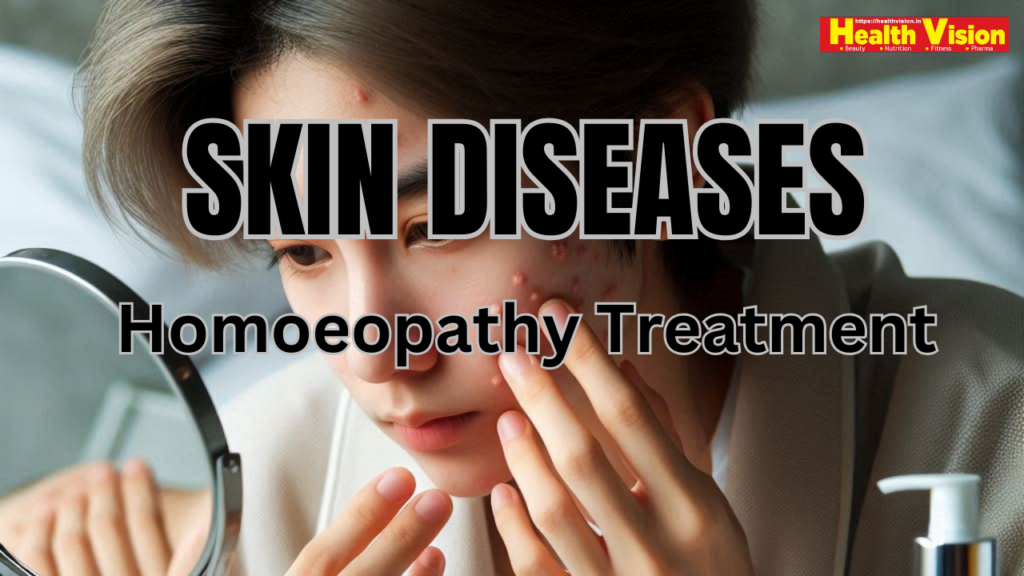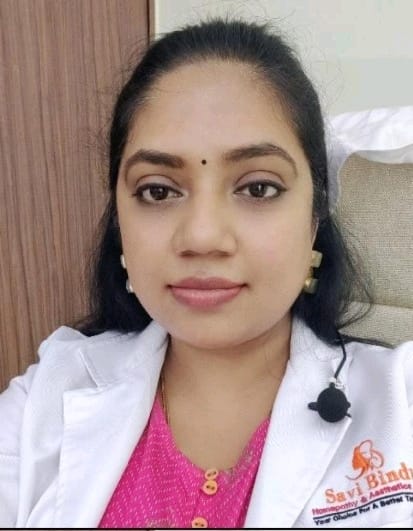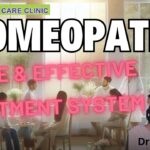Homoeopathy offers a holistic approach in treating Skin diseases by addressing not just the physical symptoms but also the underlying causes, including emotional and psychological factors. Homoeopathic remedies are personalized, considering the individual’s unique symptoms, lifestyle, and constitution. With minimal side effects, homoeopathy is increasingly being sought as a gentle yet effective alternative for managing a wide range of skin disorders.


Eczema
Also known as dermatitis, eczema is among the commonest forms of skin disease, and it often responds well to Homoeopathic treatment. It affects up to 20 per cent of school children and seven to eight percent of adults. Children tend to grow out of it and the majority improve greatly by their mid-teens. It is an inflammatory condition in which patches of skin become red, inflamed and itchy. The affected areas may also be covered in small, fluid-filled blisters. There are a number of different forms of eczema.
• The commonest form is atopic dermatitis, an inborn condition which usually starts before the age of two, and may continue to flare up throughout adolescence and adulthood. “Atopy” means an inherited tendency to allergies, including eczema, asthma and hay fever. It runs in families and is getting commoner for reasons that are not entirely clear.
• Contact dermatitis is caused by contact with a substance to which an individual is sensitive, such as nickel, rubber or various plants. It can occur at any age. Nickel is one of the commonest skin sensitizers – it can usually be spotted by the areas it affects: earrings and jean buttons often contain nickel.
• Seborrhoeic dermatitis occurs in adult and infantile forms. In babies it is often known as cradle cap because it affects the scalp, although it may also affect the nappy area. For adults it usually affects the face and scalp.
• Finally, varicose eczema occurs mostly in older people, as the name suggests it is often linked to varicose veins: the blood stagnates in the lower legs resulting in a poor supply of oxygen and nutrients. The skin becomes dark, itchy and inflamed. If left untreated the skin may break down, forming an ulcer.
Psoriasis
This too comes in several varieties, but all involve reddened areas of skin covered in large, adherent silvery scales. Psoriasis tends to run in families; it most commonly comes on in late teenage or early adult life. It can be triggered by some medicines, Including antidepressant, antihypertensive & antimalarial drugs, & infections with streptococcus bacteria.
Acne
It is a condition in which the over-active oil glands and dead cells clog the pores resulting into pimples. It mostly occurs in teen age. They mostly involve the face, neck, back and shoulders. If left untreated it may cause blemishes and scarring.
Scabies
Tiny mites that burrow into the skin may cause scabies. An intensely itchy rash in the webs of fingers, wrists, elbows, and buttocks are typical scabies.
Hives (Urticaria)
Hives are itchy welts that are raised up from the normal layer of the skin. They may be caused by an allergic reaction in the body or outside factors, such as stress, illness, or even tight clothes.
Warts
The common raised bumps on the skin known as warts are actually caused by the human papillomavirus (HPV). Warts are contagious, and can appear on any part of the body. Common warts typically grow on the hands, feet, and joints, though they can appear anywhere. Usually have a hereditary origin.
Fungal nail infection
A condition in which fungus lives near, under, and around the nails, usually in the feet. The fungal build-up causes the nail’s edges to crumble away, producing white-yellowish scaling and flaking on the surface of the nails.
Lupus
Lupus is a complex disorder that varies from person to person. The disease attacks the immune system, causing inflammation and pain. While lupus can affect any part of the body, symptoms on the skin include red patches or ring shapes on the skin, sunburn-like rashes on the nose and cheeks, or circular rashes that don’t itch or hurt. These may be accompanied by other symptoms, such as headaches, fever, fatigue, and swollen, stiff, or painful joints.
Vitiligo (Leucoderma)
Vitiligo is the loss of pigmentation in the skin. White patches of skin are the main symptom of vitiligo, and more commonly appear in areas where the skin is exposed to sunlight. People with vitiligo often lose their hair colour early as well. For some people, the symptoms are in one area, while others find that it spreads slowly over many years.
Shingles (Herpes Zoster)
Shingles, also known as herpes zoster, is a skin disease caused by the return of a chickenpox infection from latently infected nerve cells in the spinal cord or brain. It begins as a painful sensation which is often mistaken for a musculoskeletal injury or even a heart attack. It is soon followed within one or two days by a red, blistering unilateral (one-sided) rash distributed to the skin supplied by a sensory nerve (a dermatome). Post herpetic neuralgia is a common complication which can be treated with Homoeopathy.
Rosacea
Rosacea is characterized by redness and pimples over the area of face. It mainly affects the forehead, lower half of nose and chin. It mostly occurs in woman and fairer skin people. It mainly occurs in 30 to 40 yrs of age. It may be caused due to environmental or hereditary factors.
Dry Skin
Due to use of ordinary soaps, very cold, hot or dry weather or use of any chemicals.
Pruritus
Pruritus referred to as tingling sensation of skin resulting in excessive scratching. It may be due to skin diseases, internal disorders or external factors. Common causes being fungal infections, athlete’s foot, candidiasis, chicken pox and parasitic manifestations.


Dr Gayathri Vadapalli
Savi Bindu
Homeopathy & Aesthetics Clinic
Ph : +91 96119 96600 / 96119 96611
Ph: +91 80 7965 7776
www.savibindu.com











